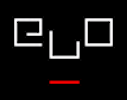Your cart is currently empty!
ELO
-
Glazier, Carpenter, Moulthrop to Read at Penn
The MACHINE reading series at the University of Pennsylvania’s Kelly Writers House, co-sponsored by the Electronic Literature Organization, will include two programs in Spring 2006. February 15, 5:30pm: Loss Pequeño… Read more.
-
Fibonacci’s Daughter
“Fibonacci’s Daughter” by M.D. Coverley (a pen name for Marjorie C. Luesebrink), published originally in New River in 2000, is a narrative and architectural puzzle. The main character, Annabelle Thompson,… Read more.
·
-
Micro-Talespin
James Meehan’s Tale-Spin, created as part of his 1976 dissertation, The Metanovel: Writing Stories by Computer, was the first major project in the area of story generation. Like one of… Read more.
·
-
Prince of Persia: The Sands of Time
Jordan Mechner is the writer and designer of groundbreaking cinematic games such as Karateka (1984), Prince of Persia (1989), and The Last Express (1997). His most recent, in collaboration with… Read more.
·
-
Shandean Ambles
Laurence Sterne’s Tristram Shandy is the 18th century’s answer to Douglas Adams — irreverent, funny, and surprisingly hypertextual. Shandean Ambles (drafted at the Shandy Hall under Sterne’s imposing nose) parodies… Read more.
·
-
The ELO at MLA, and 2006 Wishes
The electronic literature meetup at the MLA convention was great fun, and a perfect first celebration of the new partnership between the Electronic Literature Organization (ELO) and the Maryland Institute… Read more.
·
-
ELO and MITH Announce Partnership
At today’s MLA event the Electronic Literature Organization and the Maryland Institute for Technology in the Humanities announced that we have agreed on the principles of a wide-ranging partnership. Plans… Read more.
·
-
The Breakup Conversation
The Breakup Conversation is a satirical simulation of the conversation at the end of a romantic relationship. The player is expected to perform a breakup over instant messenger, while the… Read more.
·
-
Shifting Stories in “23,040 Bridges”
Adam Cadre’s “23,040 Bridges” provides a combinatoric explosion of different stories, asking the reader to rank how culpable each of five characters is in the death of the main character.… Read more.
-
Digital Media Narrative Job at WPI
Worcester Polytechnic Institute (WPI) is seeking a full-time, tenure-track, Assistant Professor to teach narrative in digital media. We welcome interests in story telling for games and interactive media, digital writing… Read more.
